Can we fight the signs of aging or is it just an inevitable part of life? The answers to both of these questions are ‘yes’. In my last post, I discussed our true desire as we age. We aren’t looking just for a longer life, but we’re looking for a longer, healthier life. This is the difference between healthspan and lifespan. Aging is inevitable, but we can influence how fast and how aggressive the signs of aging come on and thereby improving quality of life.
What is happening in the body as we age?
- Altered intercellular communication = inefficient communication from one cell to the other that can contribute to decline in tissue health.
- Genomic instability = when genes start to get damaged faster than they get repaired, this contributes to unhealthy cell development, decline of DNA repair, epigenetic alterations, cancer cell formation and much more.
- Stem cell exhaustion = stem cells play 2 major roles: providing new cells for the body as old ones are lost and replacing cells that are damaged. Stem cells are the body’s raw materials. Stem cell exhaustion refers to a decline in stem cells production and compromised renewal capacity. This can lead to osteoporosis, decreased intestinal function, loss of muscle mass, weaken immune system and so on…
- Cellular senescence = when cells reach a terminal stage at which they cease to divide, they can become dysfunctional at this point. Overtime, all cells will eventually stop dividing and become dysfunctional. However, if it happens too fast and too aggressively, especially if there is DNA damage, some degree of telomere shortening occurs and cell division becomes inefficient. This results in these cells becoming senescent cells much sooner. Senescent cells are unique in that they eventually stop multiplying but don’t die off when they should. They instead remain and continue to release chemicals that can trigger inflammation. Senescent cells can help with some degree of cancer protection and some degree of tissue damage and repair; however, they lose their body benefits when senescence occurs in accelerated patterns that are involved with aging.
- Mitochondrial dysfunction = when mitochondria, often referred to as the powerhouse of the cell, cannot produce energy anymore or cannot get energy from food efficiently, this can lead to the loss of resiliency and the inability to recover.
- Deregulated nutrient sensing = dysfunction occurring in the mechanisms that help the body control appetite, insulin secretion, the growth hormone/oestrogen/progesterone production, and mitochondrial function. An example causing this dysfunction is too much food consumption which can impair nutrient sensing causing insulin resistance. Insulin resistance is linked to all kinds of unwanted aging symptoms and even chronic disease.
- Loss of proteostasis = dysfunctional protein synthesis, degradation, and clearance.
- Epigenetic alterations = the messages from genes that are expressed are not efficient.
- Telomere attrition = the little caps of the chromosomes are shortened.
What accelerates the aging process?
Throughout life, different environmental exposures can create changes that can damage your DNA, change how your genes express, and can shorten your telomeres. A normal healthy cell can then become senescent or dysfunctional. Instead, they get exhausted, and you end up with lots of ‘debris.’ All of these ‘garbage dead cells’ can accumulate over time and the immune system has to get rid of it. This is called inflamm-aging which is the body’s ability to get rid of all these cellular debris. If you have an increase of injury to your tissues, you’ve experienced more toxic exposures and your body responds by increasing inflammation, you will have more ‘garbage cells’ in your body. The more garbage cells you have, the more prone you would be for inflamm-aging. All these mechanisms can start to impact your genes and your physiology where you start getting chronic inflammation and accelerated aging. You can then end up with multiple chronic diseases, one following another after another as you go through the aging process.
As a functional nutritionist, I have the tools to address these issues and can resource you to work on changing the expression of these hallmarks of aging to increase your health span.
What can I do to slow the effects of aging?
The following list includes factors that you and I can influence and take action on to slow the negative effects of aging and improve our healthspan.
- Exercise
- Muscle mass and strength
- Body mass index (BMI)
- Diet
- Smoking
- Alcohol consumption
- Environmental toxins
- Polypharmacy
- Social relationships
- Sense of purpose
- Resiliency
What is resiliency and how is it tied to healthy aging?
When you look at the science that has studied individuals that are 100 and above, there is one key thing they have in common, they have retained their resiliency. Resiliency is defined as the ability to bounce back after a stressful event or adversity in life. Below are areas of resiliency that we can look to improve together.
- Pathogen Resiliency = ability to coordinate an immune response
- Immune resiliency = ability to maintain immune cells
- Microbiome resiliency = ability to change bacteria population and post-biotics
- Stress response resiliency = ability to maintain physiological homeostasis under stress
- Psychological resiliency = ability to maintain positive mood and relationships
- Cognitive resiliency = ability to handle cognitive challenges and cognitive endurance
- Thermal resiliency = ability to handle cold or hot temperature
- Toxicological resiliency = ability to quench and metabolise toxicants
- Dietary resiliency = ability to tolerate dietary foods
- Inflammatory resiliency = ability to proportionally respond to inflammatory triggers
- Sleep resiliency = ability to fall and stay asleep
My role as a functional nutritionist would be to try to identify breakdowns of the physiological resiliencies listed above and work together to restore it. Fill out my contact form to start a conversation about how we can increase your healthspan.
Reference List
- Aghali A, Koloko Ngassie ML, Pabelick CM, Prakash YS. Cellular Senescence in Aging Lungs and Diseases. Cells. 2022 May 29;11(11):1781. doi: 10.3390/cells11111781. PMID: 35681476; PMCID: PMC9179897.
- Ahima, R. Connecting obesity, aging and diabetes. Nat Med 15, 996–997 (2009). https://doi.org/10.1038/nm0909-996
- Aunan JR, Watson MM, Hagland HR, Søreide K. Molecular and biological hallmarks of ageing. Br J Surg. 2016 Jan;103(2):e29-46. doi: 10.1002/bjs.10053. PMID: 26771470.
- Bhaskaran K, Dos-Santos-Silva I, Leon DA, Douglas IJ, Smeeth L. Association of BMI with overall and cause-specific mortality: a population-based cohort study of 3.6 million adults in the UK. The Lancet, Diabetes & Endocrinology. Dec. 2018. Vol. 6. Issue 12. P 944-953. https://doi.org/10.1016/S2213-8587(18)30288-2
- Bosco, N., Noti, M. The aging gut microbiome and its impact on host immunity. Genes Immun 22, 289–303 (2021). https://doi.org/10.1038/s41435-021-00126-8
- Bowdish DME. The Aging Lung: Is Lung Health Good Health for Older Adults? Chest. 2019 Feb;155(2):391-400. doi: 10.1016/j.chest.2018.09.003. Epub 2018 Sep 22. PMID: 30253136.
- Brown G.C. Living too Long. Embo Report, 2015, Issue 16, p 137-141. https://www.embopress.org/doi/full/10.15252/embr.201439518
- C. Borras, M. Ingles, C. Mas-Bargues, M. Dromant, J. Sanz-Ros, A. Román-Domínguez, L. Gimeno-Mallench, J. Gambini, J. Viña,Centenarians: An excellent example of resilience for successful ageing, Mechanisms of Ageing and Development, Volume 186, 2020, 111199, ISSN 0047-6374, https://doi.org/10.1016/j.mad.2019.111199.
- Chang TI, Park H, Kim DW, Jeon EK, Rhee CM, Kalantar-Zadeh K, Kang EW, Kang SW, Han SH. Polypharmacy, hospitalization, and mortality risk: a nationwide cohort study. Sci Rep. 2020 Nov 3;10(1):18964. doi: 10.1038/s41598-020-75888-8. PMID: 33144598; PMCID: PMC7609640.
- Charles P. Lambert. Strength as a Predictor of Longevity: Compelling Evidence. J. Mens. Health 2022, 18(5), 113. https://doi.org/10.31083/j.jomh1805113
- DuGoff EH, Canudas-Romo V, Buttorff C, Leff B, Anderson GF. Multiple chronic conditions and life expectancy: a life table analysis. Med Care. 2014 Aug;52(8):688-94. doi: 10.1097/MLR.0000000000000166. PMID: 25023914.
- Fane, M., Weeraratna, A.T. How the ageing microenvironment influences tumour progression. Nat Rev Cancer 20, 89–106 (2020). https://doi.org/10.1038/s41568-019-0222-9
- Fang Y, Gong AY, Haller ST, Dworkin LD, Liu Z, Gong R. The ageing kidney: Molecular mechanisms and clinical implications. Ageing Res Rev. 2020 Nov;63:101151. doi: 10.1016/j.arr.2020.101151. Epub 2020 Aug 22. PMID: 32835891; PMCID: PMC7595250.
- Gellert C, Schöttker B, Brenner H. Smoking and all-cause mortality in older people: systematic review and meta-analysis. Arch Intern Med. 2012 Jun 11;172(11):837-44. doi: 10.1001/archinternmed.2012.1397. PMID: 22688992.
- Gómez-Linton DR, Alavez S, Alarcón-Aguilar A, López-Diazguerrero NE, Konigsberg M, Pérez-Flores LJ. Some naturally occurring compounds that increase longevity and stress resistance in model organisms of aging. Biogerontology. 2019 Oct;20(5):583-603. doi: 10.1007/s10522-019-09817-2. Epub 2019 Jun 11. PMID: 31187283.
- Gu Q, Sable CM, Brooks-Wilson A, Murphy RA. Dietary patterns in the healthy oldest old in the healthy aging study and the Canadian longitudinal study of aging: a cohort study. BMC Geriatr. 2020 Mar 16;20(1):106. doi: 10.1186/s12877-020-01507-w. PMID: 32178631; PMCID: PMC7077120.
- Holt-Lunstad J, Smith T, Layton B,. Social Relationships and Mortality Risk: A meta-analytic review. Plos Medicine. July 27, 2010. https://doi.org/10.1371/journal.pmed.1000316
- Hunt NJ, Kang SWS, Lockwood GP, Le Couteur DG, Cogger VC. Hallmarks of Aging in the Liver. Comput Struct Biotechnol J. 2019 Aug 7;17:1151-1161. doi: 10.1016/j.csbj.2019.07.021. PMID: 31462971; PMCID: PMC6709368.
- Jan Vijg, Cristina Montagna, Genome instability and aging: Cause or effect?, Translational Medicine of Aging, Volume 1, 2017, Pages 5-11, ISSN 2468-5011, https://doi.org/10.1016/j.tma.2017.09.003.
- Jiarong Lan, Yanyun Zhao, Feixia Dong, Ziyou Yan, Wenjie Zheng, Jinping Fan, Guoli Sun,Meta-analysis of the effect and safety of berberine in the treatment of type 2 diabetes mellitus, hyperlipemia and hypertension, Journal of Ethnopharmacology, Volume 161, 2015, Pages 69-81, ISSN 0378-8741, https://doi.org/10.1016/j.jep.2014.09.049.
- Kanasaki, K., Kitada, M. & Koya, D. Pathophysiology of the aging kidney and therapeutic interventions.Hypertens Res 35, 1121–1128 (2012). https://doi.org/10.1038/hr.2012.159
- Labib AL-Musawe, Ana Paula Martins, Joao Filipe Raposo, Carla Torre, The association between polypharmacy and adverse health consequences in elderly type 2 diabetes mellitus patients; a systematic review and meta-analysis, Diabetes Research and Clinical Practice, Volume 155, 2019, 107804, ISSN 0168-8227, https://doi.org/10.1016/j.diabres.2019.107804.
- Lang UE, Borgwardt S. Molecular mechanisms of depression: perspectives on new treatment strategies. Cell Physiol Biochem. 2013;31(6):761-77. doi: 10.1159/000350094. Epub 2013 May 31. PMID: 23735822.
- Leelakanok N, Holcombe AL, Lund BC, Gu X, Schweizer ML. Association between polypharmacy and death: A systematic review and meta-analysis. J Am Pharm Assoc (2003). 2017 Nov-Dec;57(6):729-738.e10. doi: 10.1016/j.japh.2017.06.002. Epub 2017 Aug 5. PMID: 28784299.
- NIH, National Institute on Aging. Geroscience: The intersection of basic aging biology, chronic disease, and health. https://www.nia.nih.gov/research/dab/geroscience-intersection-basic-aging-biology-chronic-disease-and-health
- O’Keefe EL, Torres-Acosta N, O’Keefe JH, Lavie CJ. Training for Longevity: The Reverse J-Curve for Exercise. Mo Med. 2020 Jul-Aug;117(4):355-361. PMID: 32848273; PMCID: PMC7431070.
- Parkinson’s Disease
- Prüss-Ustün, A., Vickers, C., Haefliger, P. et al. Knowns and unknowns on burden of disease due to chemicals: a systematic review. Environ Health10, 9 (2011). https://doi.org/10.1186/1476-069X-10-9
- Roland Schmitt, Anette Melk, Molecular mechanisms of renal aging, Kidney International, Volume 92, Issue 3, 2017, Pages 569-579, ISSN 0085-2538, https://doi.org/10.1016/j.kint.2017.02.036.
- Santoro A, Zhao J, Wu L, Carru C, Biagi E, Franceschi C. Microbiomes other than the gut: inflammaging and age-related diseases. Semin Immunopathol. 2020 Oct;42(5):589-605. doi: 10.1007/s00281-020-00814-z. Epub 2020 Sep 30. PMID: 32997224; PMCID: PMC7666274.
- Schellnegger M, Lin AC, Hammer N, Kamolz LP. Physical Activity on Telomere Length as a Biomarker for Aging: A Systematic Review. Sports Med Open. 2022 Sep 4;8(1):111. doi: 10.1186/s40798-022-00503-1. PMID: 36057868; PMCID: PMC9441412.
- Shiba K, Kubzansky LD, Williams DR, VanderWeele TJ, Kim ES. Associations Between Purpose in Life and Mortality by SES. Am J Prev Med. 2021 Aug;61(2):e53-e61. doi: 10.1016/j.amepre.2021.02.011. Epub 2021 May 18. PMID: 34020851; PMCID: PMC8319073.
- Trajano GS, Blazevich AJ. Static Stretching Reduces Motoneuron Excitability: The Potential Role of Neuromodulation. Exerc Sport Sci Rev. 2021 Apr 1;49(2):126-132. doi: 10.1249/JES.0000000000000243. PMID: 33720914; PMCID: PMC7967995.
- Ungvari Z, Tarantini S, Donato, A, Galvan V and Csiszar A. Mechanisms of Vascular Aging – Circulation Research September 14, 2018. Vo. 123, Issue 7. https://www.ahajournals.org/doi/10.1161/CIRCRESAHA.118.311378#:~:text=The%20combination%20of%20increased%20mitochondrial,cells%2C%20exacerbating%20vascular%20aging%20processes.
- Watson A, Chen YC and Peter K. Vascular aging and Vascular Disease Have much in Common. AHA Journals. Aug. 22, Vol 42, issue 8. https://www.ahajournals.org/doi/10.1161/ATVBAHA.122.317892#:~:text=Vascular%20aging%20causes%20many%20proteomic,in%20vascular%20diseases%20as%20well.
- Wei W, Zhao H, Wang A, Sui M, Liang K, Deng H, Ma Y, Zhang Y, Zhang H, Guan Y. A clinical study on the short-term effect of berberine in comparison to metformin on the metabolic characteristics of women with polycystic ovary syndrome. Eur J Endocrinol. 2012 Jan;166(1):99-105. doi: 10.1530/EJE-11-0616. Epub 2011 Oct 21. PMID: 22019891.
- William Giblin, David B. Lombard, Chapter 3 – Sirtuins, Healthspan, and Longevity in Mammals, Editor(s): Matt R. Kaeberlein, George M. Martin, Handbook of the Biology of Aging (Eighth Edition), Academic Press, 2016, Pages 83-132, ISBN 9780124115965,https://doi.org/10.1016/B978-0-12-411596-5.00003-4.
- Wood A, Kaptoge S, Butterworth A, Willeit P, Warnakula S, Bolton T et al. Risk Thresholds for alcohol consumption: combined analysis of individual-participan data for 599 912 current drinkers in 83 prospective studies. The Lancet. April 14, 2018, Vol. 391, Issue 10129, p1513-1523. https://doi.org/10.1016/S0140-6736(18)30134-X
- Xu J, Wan CS, Ktoris K, Reijnierse EM, Maier AB. Sarcopenia Is Associated with Mortality in Adults: A Systematic Review and Meta-Analysis. Gerontology. 2022;68(4):361-376. doi: 10.1159/000517099. Epub 2021 Jul 27. PMID: 34315158.
- Yang BY, Fan S, Thiering E, Seissler J, Nowak D, Dong GH, Heinrich J. Ambient air pollution and diabetes: A systematic review and meta-analysis. Environ Res. 2020 Jan;180:108817. doi: 10.1016/j.envres.2019.108817. Epub 2019 Oct 12. PMID: 31627156.
- Zeng Y, Shen K. Resilience significantly contributes to exceptional longevity. Curr Gerontol Geriatr Res. 2010;2010:525693. doi: 10.1155/2010/525693. Epub 2010 Dec 6. PMID: 21197075; PMCID: PMC3004383.
- Zhu M, Liu X, Liu W, Lu Y, Cheng J, Chen Y. β cell aging and age-related diabetes. Aging (Albany NY). 2021 Mar 3;13(5):7691-7706. doi: 10.18632/aging.202593. Epub 2021 Mar 3. PMID: 33686020; PMCID: PMC7993693.






